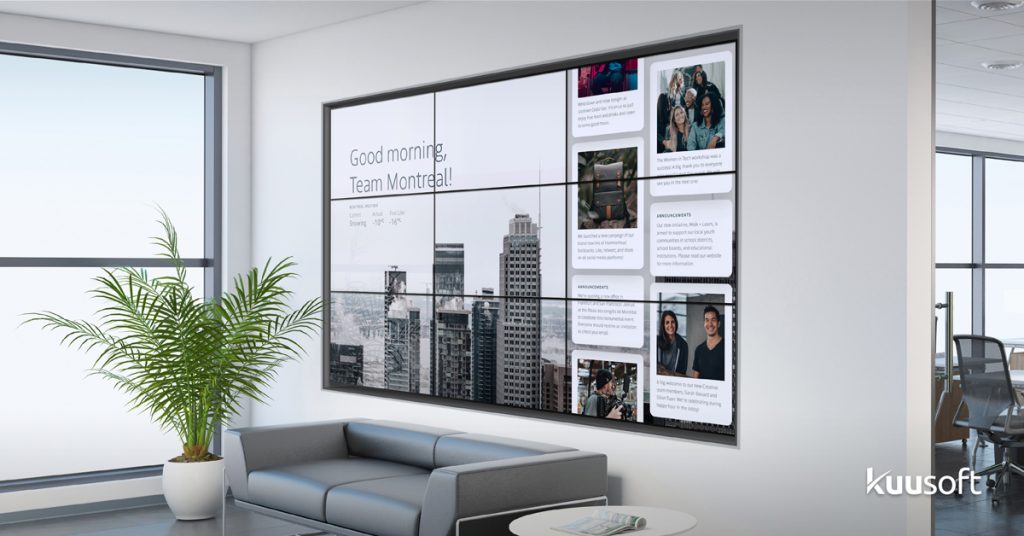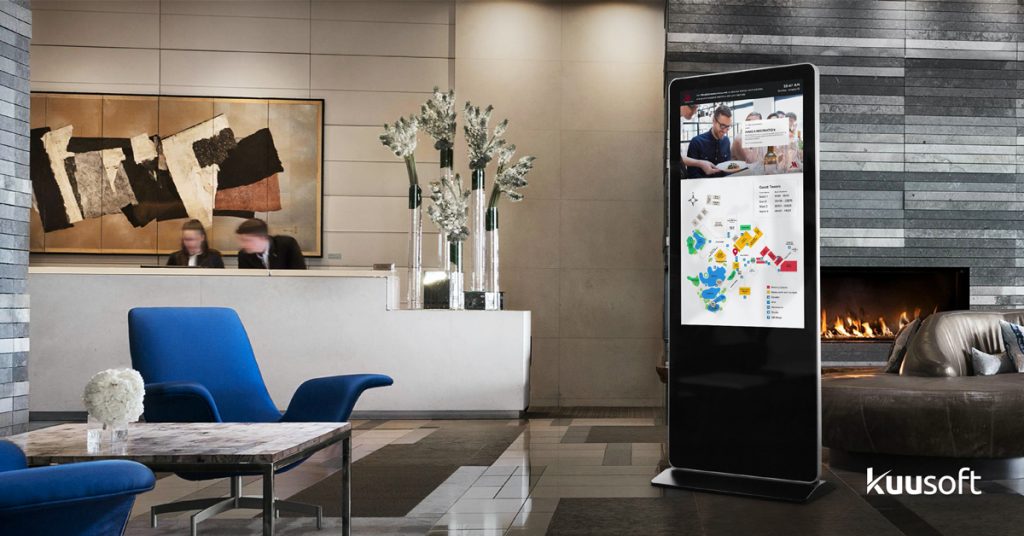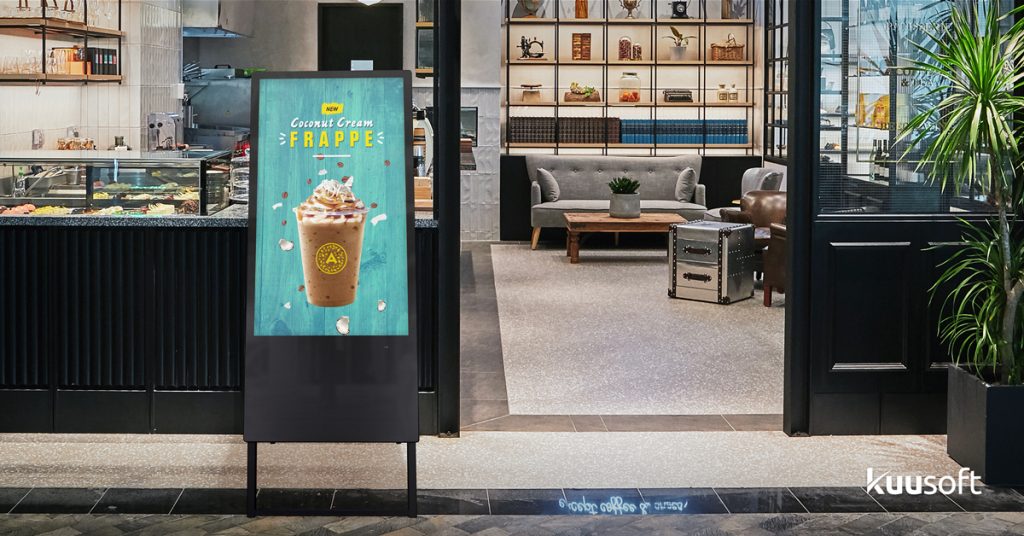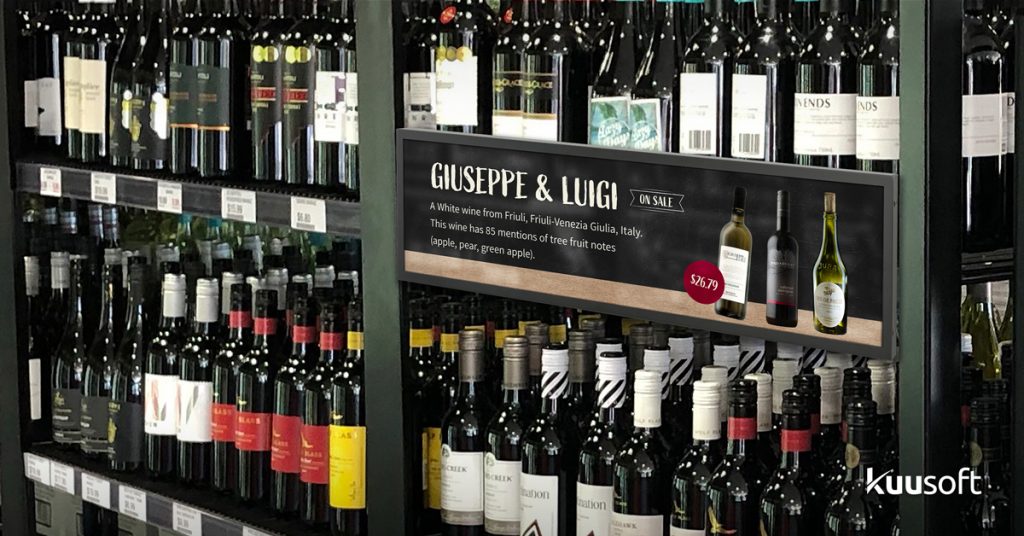
Digital signage is an effective solution for any industry due to its unlimited potential to communicate visually with its audience. Depending on the nature of the business, each enterprise might need a different type of digital signage boards to help it achieve its goals.
If you are just starting to learn about digital signage, you’ve come to the right place. In this article, we will briefly introduce the 8 types of digital signage boards to help you develop a better understanding of their respective functions and applications.
What is Digital Signage?
A segment of electronic signage, digital signage can also be defined as screens or monitors that use technologies such as LED, LCD, and projections to display videos, images, text, and multimedia content digitally. Digital signage board is widely used in public spaces for wayfinding, advertising, marketing, and educational purposes. In addition, it can be used as a network of digital displays that are centrally managed, but at the same time are also capable of pushing different content to each screen for their targeted audiences.
Top 8 Types of Digital Signage Boards
Digital signage boards have become increasingly practical in today’s world as technology continues to evolve. Whether you’re walking down the street, eating at restaurants, or shopping in stores, you see digital signs everywhere you go without being aware of it. It is a powerful, versatile communication tool that can be integrated with many different businesses and demands.
1. Digital Drive-Thru Menu Boards

Digital signage boards in the drive-thru lane consist of high-brightness screens for displaying menu items and promotional messages. In order to protect the screens and withstand a wide range of environmental conditions, these outdoor displays’ enclosures are made of robust, durable materials with water-resistant features. The ultra-bright screens also provide excellent visibility so that customers can easily read the menus even under direct sunlight.
Digital drive-thru menu boards are most commonly used in the quick-service restaurant (QSR) setting where drive-thru services are offered. They have been proven effective in helping customers decide what to order and speed up the queue. According to market research from the QSR industry, most major quick-service restaurants have reported an estimate that about 70% of their sales take place at their drive-thru window.
It’s undeniable that fast food businesses must continue to evolve and improve their drive-thru services to ensure order accuracy and speed, and digital drive-thru menu boards can help them by giving customers a clearer idea of what they might want to order.
To learn more about how digital drive-thru menu boards can improve the customer experience at QSRs, read this post to find out!
2. Digital Menu Boards

Likewise, digital menu boards are displays or digital signage boards that show your menu items and promotions. They are a display system consisting of a digital signage player and content management software that can present dynamic menus on any TV screen. Digital menu boards are typically mounted to the wall above the counters so customers can see them the moment they step into the store.
With digital menu boards, restaurants can display menu items, pricing, and nutritional information, along with dynamic animations and images to grab customers’ attention. They can also be updated in no time, which makes it easy for restaurants to be in full control of their menu content.
Besides quick-service restaurants, digital menu boards are also being used in cafes and places that have concession stands. Since 74% of restaurant customers state that an easy-to-read menu is their top priority for having a good experience, the adoption of digital menu boards has become increasingly popular in the food service industry.
Continue to learn more about digital menu boards here: benefits of digital menu boards.
3. Digital Posters

Digital posters are a great option for any business that is just starting with digital signage board thanks to their simple implementation. This form of digital signage board looks just like a poster displayed on a screen, which makes it highly versatile in terms of content presentations.
From advertising displays in a retail store to a digital building directory in a hospital, there are countless ways you can use digital posters to communicate more effectively with your intended audience, regardless of which industry your business is in. They can be easily mounted onto the walls in both portrait and landscape orientation, giving you more flexibility when planning the space for installation.
4. Video Walls

A video wall is a large visualization surface built by joining multiple TV screens or monitors together to form one seamless, large display. Due to its large display area and wide viewing angles, a video wall can easily create a focal point of information to draw people’s attention and deliver exceptional viewing experiences.
Video walls are often used in larger venues where information needs to reach massive crowds, such as airports, hotels, hospitals, shopping malls, sports arenas, corporate lobbies, and more. They give businesses remarkable flexibility in their operations and can be integrated into many different applications. Retailers can use video walls as an advertising platform to deliver rich promotional messages. Corporations, on the other hand, can use them to share the brand story, welcome visitors, and enhance internal communication.
5. Digital Signage Kiosks

Digital signage kiosks are another form of digital signage boards. They are freestanding units that feature touchscreens to deliver interactive digital content to their audience at eye level. They are built with durable steel enclosures which makes them ideal for high-traffic areas, including transportation hubs, health care facilities, tourist attractions, and more.
Digital signage kiosks mainly serve as a self-service information point where users can freely browse on their own. Unlike video walls and other digital signage boards, digital signage kiosks focus on 1:1 interaction, which enables them to deliver more personalized content to their users. For example, a wayfinding digital kiosk can help users identify their current location and provide guidance on where they need to go. Hotel guests can utilize digital signage kiosks to look up travel information and weather forecasts to help them plan their trips.
Furthermore, digital signage kiosks in a retail store can also reduce your salespeople’s workload, as customers can use them to quickly look up your store catalog or service menu and obtain product information.
6. A-frame Digital Sandwich Board

A-frame digital sandwich boards, or digital A-frames, are digital floor-standing units you can place at your store entrance, sidewalk, or shopfront locations that see a lot of people coming through in a day.
They are simple, effective, and require a small footprint. Due to their compact and ultra-slim design, they can be easily moved around to areas in your store that need more focused advertising. A-frame digital sandwich boards are also collapsible, which allows you to carry them to trade shows or events for showcasing your marketing materials and brand.
In addition, restaurants, cafes, and retail stores use A-frame digital sandwich boards to display in-store promotions, menus, and product videos to attract passersby and boost foot traffic. Since they can advertise in the most visible position, they make good first impressions and help your business to stand out from your competitors.
7. Digital Shelf Edge Display

Digital shelf-edge displays, also known as retail shelf screens, are ultra-slim, wide-stretched screen displays that can be affixed to product shelves for in-store advertising purposes.
These digital signage boards provide retailers a unique opportunity to showcase their products and brand at the point of sale through captivating, animated content. They can also increase the effectiveness of your cross-selling and upselling strategy by displaying content that highlights recommended bundled products to encourage impulse purchases from your customers.
The ability to dynamically control pricing across the entire store, or even multiple stores, from a central platform, is another great advantage of these retail shelf screens. This ensures that all prices are accurate and consistent, which spares you the trouble of manually replacing labels and reduces human errors.
Besides pricing and advertisements, you can also use digital shelf-edge displays to show product information and customer reviews. As consumers nowadays tend to look up fellow consumers’ reviews online before making a purchase, using digital shelf-edge displays to present real buyer reviews can help you build trust with your potential customers.
8. Digital Advertising Power Bank

A digital advertising power bank, or digital table tent, is a compact device that serves as an information display stand with built-in phone charging cables. Simply put, it’s a 2-in-1 charging station and digital information display that can be placed on a tabletop to engage and entertain viewers.
They are suitable for any business environment that has a waiting room, dining area, reception desk, or checkout desk. For example, airport lounges can leverage digital table tents to display flight schedules and weather forecasts to keep travelers informed. Financial institutions, such as retail banks, can place them in the waiting area to showcase their in-branch products and promotional offers to intrigue customers and reduce perceived wait times.
Restaurants and cafes, on the other hand, can display featured or recommended menu items based on different times of the day to drive sales. And with the phone charging feature, restaurants can even get their customers to stick around longer and thus increase the chances of them ordering a few more drinks while waiting for their phones to charge.
The Takeaway
Digital signage is a powerful tool for any industry to visually communicate with its customers. However, with so many different forms of digital signage boards available in the market, choosing the right solution for your business can be challenging. You will need to understand your business’s objectives first, which can help you come up with a structured, thoughtful plan for your digital signage deployment.
You can learn more about NexSigns’ Digital Signage solution and connect with us on Facebook, LinkedIn, Twitter, and YouTube to get the latest info on digital signage!





